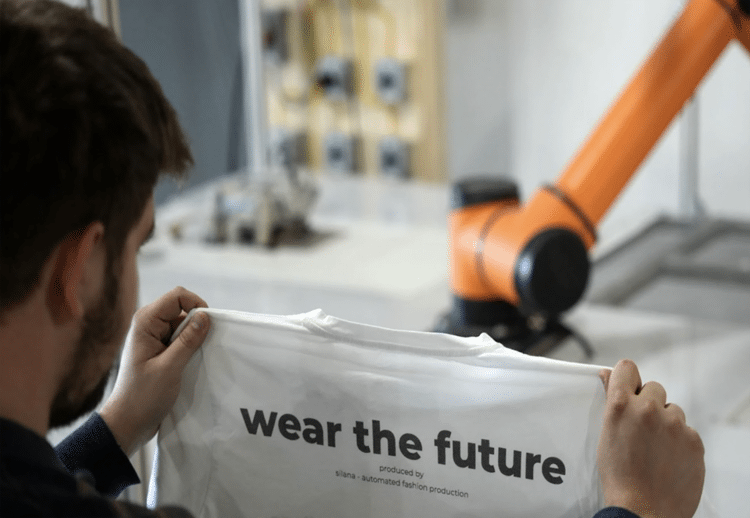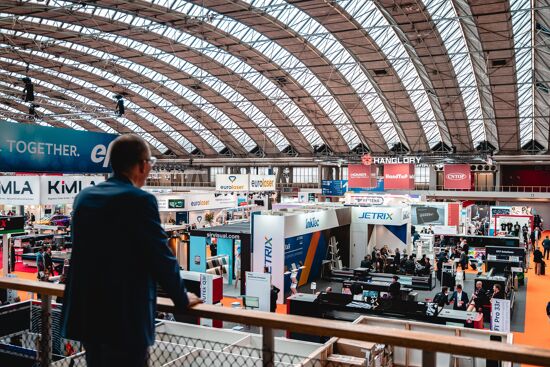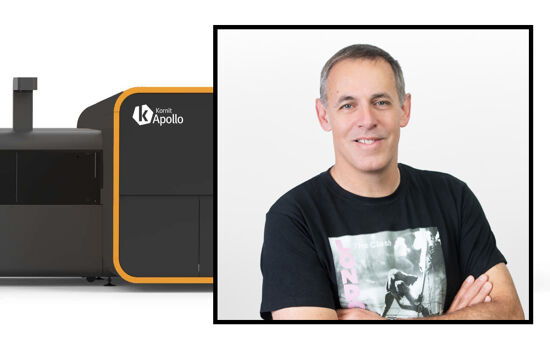How Robotic Sewing is Transforming the Fashion Industry

The fashion industry faces rising labour costs, skill shortages, and environmental concerns, pushing for sustainable, local, and tech-driven solutions. Silana, led by Michael Mayr, aims to revolutionise garment production with advanced robotics, addressing waste, efficiency, and transparency. Pilot projects in Austria and Germany demonstrate the potential of automated sewing to reshape the future of apparel manufacturing and potentially other industries.
The fashion industry, long dependent on traditional practices, has reached a pivotal moment. Labour costs are climbing, skilled workers are increasingly scarce, and the environmental cost of overproduction is no longer justifiable.
As the FESPA Textile Ambassador, my conversations with many industry leaders continually highlight one resounding theme: the future of printed fashion must be sustainable, local, and technologically advanced.
At Silana, the company co-founded by Michael Mayr, they have taken on an ambitious mission to revolutionise garment production with advanced robotics. Their goal is both bold and necessary—to reimagine the way clothes are made while tackling long-standing challenges that have plagued the industry for decades. In our interview (listen here) Michael shares his knowledge and insider insights (his family own one on the largest apparel retailers in Europe). Michael is determined to change the landscape of sewn manufacture, and with a degree in engineering and fashion in his DNA - he's perfectly placed to enable change by automating sewn production.
The Fashion Industry’s Pressing Challenges
The fashion world has always been fast-paced, but the mechanics behind it have remained largely traditional. Outsourcing production to countries in the Far East, long considered the backbone of cost-effective manufacturing, is under scrutiny. Labour shortages, rising wages, and the environmental impact of mass production are forcing businesses to rethink their supply chains.
Consumers and regulations are also driving a shift. Today’s shopper increasingly demands transparency, ethical labour practices, and sustainability. Regulations, too, are tightening, holding companies accountable for waste, overproduction, and supply chain transparency.
These challenges create an exciting opportunity for innovation. At the heart of this transformation lies one term that keeps surfacing in every conversation I have with industry insiders—nearshoring.
Nearshoring, Simplified
Nearshoring involves returning garment production closer to the consumer market. This speeds up trend cycles and reduces shipping emissions. However, it brings its own set of hurdles, including a lack of capacity in nearby markets and soaring labour costs. For nearshoring to work, something had to change. Enter robotic sewing systems.
Innovations in Robotic Sewing
Pioneering automated sewing has been the primary focus at Silana. Sewing, unlike other parts of garment production, has traditionally been resistant to automation due to the variability and complexity of handling fabrics. Yet, with strategic use of AI and computer vision technologies, Silana have developed robotic systems capable of precisely replicating manual sewing processes with incredible consistency.
This innovation not only addresses the labour shortages plaguing the industry, but it also unlocks multiple benefits, including:
- Significant Waste Reduction: Automation eliminates overproduction by tailoring supply closely to demand. This means fewer unsold garments heading to landfills.
- Improved Efficiency: Robotic sewing allows for faster production cycles, making it easier for brands to respond quickly to trends without overstocking.
- Enhanced Sustainability: Automated manufacturing processes use fewer resources and enhance energy efficiency, supporting environmental goals.
- Transparency: Computer vision systems track every step, providing brands with supply chain control and traceability.
Their pilot projects with Loffler in Austria and Trigima an apparel manufacturer in Germany are prime examples of these benefits in action. By starting modestly with T-shirts, Silana are training the technology to perfect its handling of one of the simplest, yet most widely produced garments, setting the stage for expansion into more complex categories like outerwear.
The Role of Regulation and Consumer Demand
Global regulations are forcing fashion brands to prioritise sustainable practices and traceability. This increased scrutiny aligns perfectly with what robotic sewing can deliver. At Silana, they see their systems as not only production tools but as enablers of compliance with emerging standards.
Simultaneously, consumer sentiment is evolving. People now favour brands that adopt ethical practices, reduce waste, and ensure sustainable production methods. Robotic sewing allows brands to meet these expectations while remaining competitive in a cost-sensitive market.
Beyond Fashion
Interestingly, the applications of robotic textile handling aren't limited to fashion. The automotive and aviation industries face similar challenges with fabric and material precision. At Silana, they are already exploring how our technology could extend to these fields, creating far-reaching possibilities beyond their roots in apparel.
A Vision for the Future
Ultimately, Silana's mission is to drive change at an industry-wide level. They envision reshoring production, reducing reliance on exploitative labour practices, and producing around one billion garments annually through automated systems.
Their approach is grounded in solving challenges gradually but effectively, starting with simple garments, proving the technology, and then scaling it to revolutionise broader apparel categories.
The convergence of regulatory pressures, consumer demand, and technological advancements has created the perfect storm for transformation in the fashion industry. Businesses that act now to innovate and adapt will not only survive but thrive in this new age of conscious production.
About Michael Mayr
Michael Mayr is the co-founder of Silana, an advanced robotics company specialising in automation for the apparel industry. Growing up in a family of Austrian fashion retailers, Michael combines deep industry knowledge with technological innovation to tackle the global challenges facing fashion production today. Listen to the podcast here
Discover the latest innovations in garment printing and textiles at FESPA Global Print Expo 2025, Europe's leading print and signage exhibition taking place from 6 - 9 May at Messe Berlin, Germany. It will showcase the most innovative products, visionary concepts, and latest developments in the future of print. Register to visit here.
Interested in joining our community?
Enquire today about joining your local FESPA Association or FESPA Direct
Recent news

FESPA Global Print expo set to be the meeting point for visionaries in 2025
In less than two weeks’ time, FESPA’s annual Global Print Expo and co-located events, European Sign Expo and Personalisation Experience, will return to Messe Berlin, Germany from 6 – 9 May 2025.

The Future of Industrial Personalisation in Apparel with Kornit Digital
In this podcast, Debbie McKeegan interviews Guy Yaniv, President of EMEA at Kornit Digital about the future of personalised fashion.

Durst Group at FESPA 2025 – Innovations “Made in Durst”
The Durst Group, a leading manufacturer of digital printing and production technologies, will present a strong appearance at this year’s FESPA Global Print Expo 2025 in Berlin (Hub 27, Stand B35) under the motto “Made in Durst.” In addition to product innovations and smart software solutions, Durst will also impress visually – with a modernized booth concept focused on applications, live demonstrations, and customer interaction.
.png?width=550)
What qualities should visionaries in print have? with Arnaud Calleja from Agfa
We speak to Arnaud Calleja, the Vice President of Digital Printing Solutions at Agfa about visionaries in print.